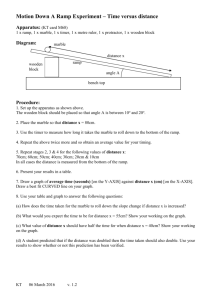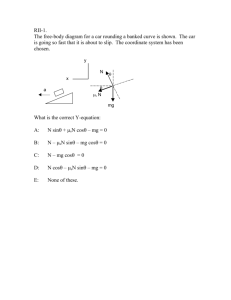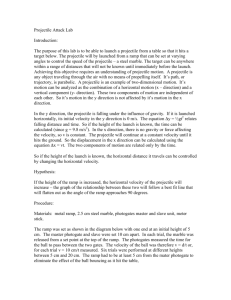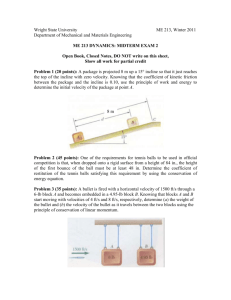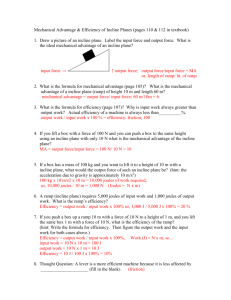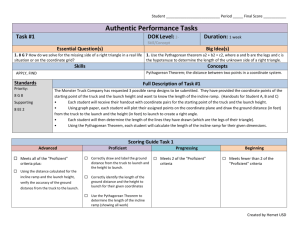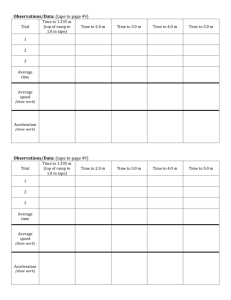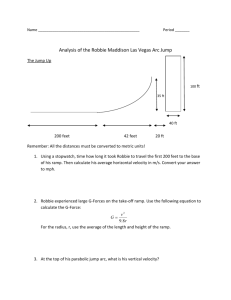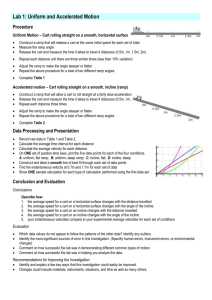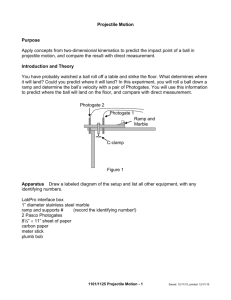Projectile Motion
advertisement
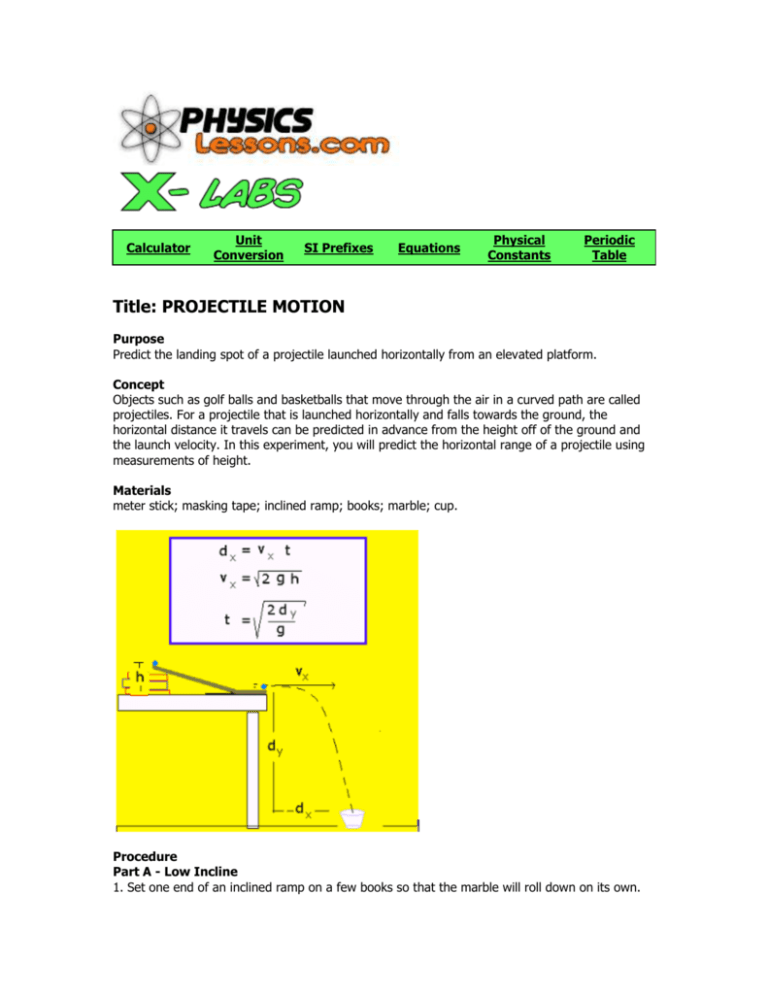
Calculator Unit Conversion SI Prefixes Equations Physical Constants Periodic Table Title: PROJECTILE MOTION Purpose Predict the landing spot of a projectile launched horizontally from an elevated platform. Concept Objects such as golf balls and basketballs that move through the air in a curved path are called projectiles. For a projectile that is launched horizontally and falls towards the ground, the horizontal distance it travels can be predicted in advance from the height off of the ground and the launch velocity. In this experiment, you will predict the horizontal range of a projectile using measurements of height. Materials meter stick; masking tape; inclined ramp; books; marble; cup. Procedure Part A - Low Incline 1. Set one end of an inclined ramp on a few books so that the marble will roll down on its own. 2. Measure the height the marble loses as it rolls down the ramp and record. 3. Measure the vertical distance the marble will fall from the table and record. 4. Use the measurement data and formulas provided to predict the horizontal distance the cup needs to be from the bottom of the table in order for the marble to land inside. 5. Let the marble roll down the ramp and measure the horizontal distance that it actually traveled. Part B - Medium Incline 1. Repeat the experiment with the ramp at a slightly higher angle. Part C - Highest Incline 1. Repeat the experiment with the ramp at a higher angle. Observations and Data: Part A - Low Incline Ramp Table Height (m) height (m) Launch velocity (m/s) Time in the air (s) Predicted range (m) Actual range(m) Launch velocity (m/s) Time in the air (s) Predicted range (m) Actual range(m) Launch velocity (m/s) Time in the air (s) Predicted range (m) Actual range(m) Part B - Medium Incline Ramp Table Height (m) height (m) Part C - Highest Incline Ramp Table Height (m) height (m) Analysis Make a graph of horizontal range (vertical axis) versus launch velocity for part A, B, and C. 1. Calculate the variation of the predicted ranges to the actual ranges for trials A, B, and C. 2. What factors could account for the difference between the predicted ranges and the actual ranges. Explain. Application If a rock was thrown horizontally, 14 m/s off of a 65 m high cliff, how long would it take to hit the ground? How much horizontal distance would it travel? Draw a diagram and calculate below.
